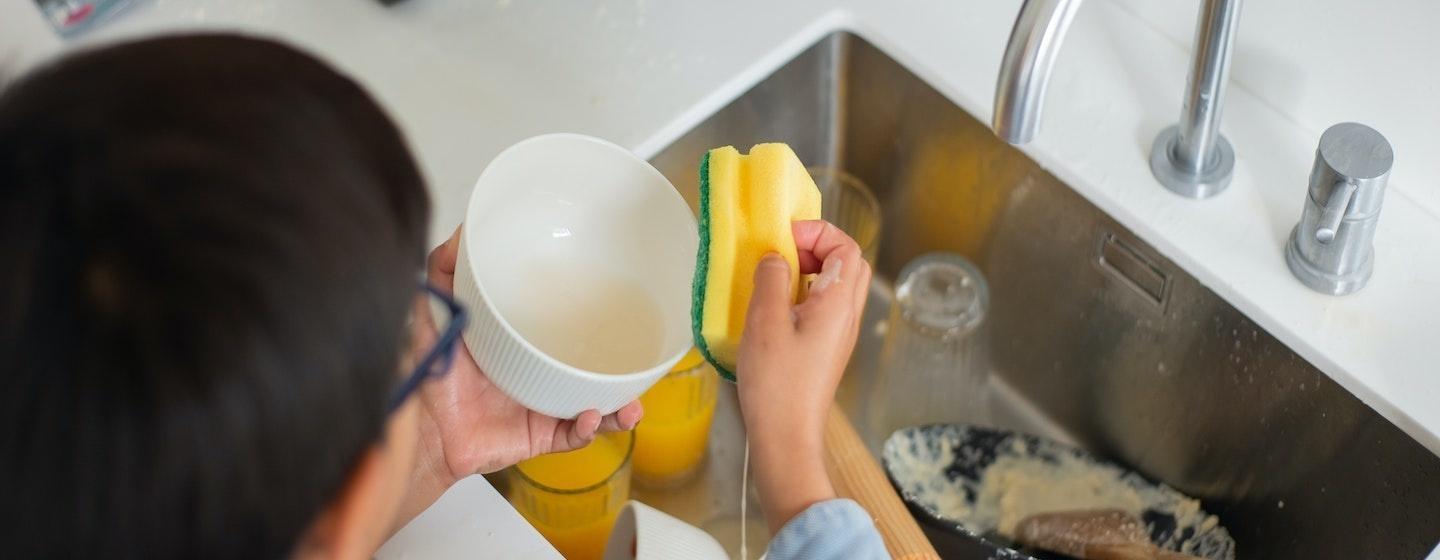The Real Reason Your Kitchen Sponge is Gross


Here’s a quick suggestion before you read any further: make sure you’re not cooking or eating anything right now.
Here’s why. Researchers at Duke University have discovered that your kitchen sponge is a better incubator for diverse bacterial communities than a Petri dish in laboratory.
Yep, that’s a gross thought. But it’s not the tiny bits of food particles caught in the sponge that turn the sponge into a happy microbe place…it’s the structure of the sponge itself.
“Bacteria are just like people living through the pandemic — some find it difficult being isolated while others thrive,” said Lingchong You, professor of biomedical engineering at Duke. “We’ve demonstrated that in a complex community that has both positive and negative interactions between species, there is an intermediate amount of integration that will maximize its overall coexistence.”
In other words, microbial communities mix in varying degrees throughout nature… and in a sponge.
Soil is a perfect example of this discovery in nature. There are plenty of tiny pockets of various sizes in soil, where microbes grow without much interaction from their neighbors.
For this experiment, researchers barcoded about 80 different strains of E. coli so they could track their population growth. Then they mixed the bacteria in various combinations on laboratory growth plates and provided a wide variety of potential living spaces ranging from six large wells to 1,536 tiny wells.
The large wells approximated environments in which microbial species can mix freely, while the small wells mimicked spaces where species could keep to themselves.
The results were the same, no matter how large or small the habitat. The small wells that began with a handful of species wound up evolving into a community with only one or two strains surviving. The large wells that began with a broad range of biodiversity also ended the experiment with only one or two species remaining.
The researchers showed how various microbial species can affect each other’s population dynamics depending on the size of their structural environment. Some bacteria thrive in a diverse community while others prefer a solitary environment. And if you have a place that allows both kinds to live their best lives you get the strongest levels of biodiversity!!
“The small portioning really hurt the species that depend on interactions with other species to survive, while the large portioning eliminated the members that suffer from these interactions (the loners),” added You. “But the intermediate portioning allowed a maximum diversity of survivors in the microbial community.”
To prove the point, the scientists then ran their experiment on a strip of regular household sponge. The results showed it’s an even better of incubator of microbial diversity than any lab equipment used in their earlier tests.
“As it turns out, a sponge is a very simple way to implement multilevel portioning to enhance the overall microbial community,” said You. “Maybe that’s why it’s a really dirty thing — the structure of a sponge just makes a perfect home for microbes.”
The Duke engineers say the larger application for this research may be found in industries that use bacteria in producing commercial products. It’s possible that structural environment should be taken intro great account, rather than putting many bacteria into one large structure.
For now, go make sure that sponge is clean.
The study appeared online February 9 in the journal Nature Chemical Biology.